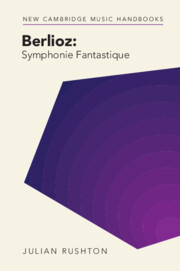Book contents
- Berlioz: Symphonie fantastique
- New Cambridge Music Handbooks
- Berlioz: Symphonie fantastique
- Copyright page
- Dedication
- Contents
- Illustrations and Box
- Tables
- Music Examples
- Preface and Acknowledgements
- Abbreviations
- 1 Introduction, Programme, Outline
- 2 Literary and Musical Romanticism
- 3 Symphonie fantastique in Berlioz’s Lifetime
- 4 First Movement
- 5 Second Movement
- 6 Third Movement
- 7 Fourth Movement
- 8 Fifth Movement
- 9 The Sequel
- 10 Reception
- 11 Other Approaches
- Select Bibliography
- Index
9 - The Sequel
Reception by Composers
Published online by Cambridge University Press: 30 November 2023
- Berlioz: Symphonie fantastique
- New Cambridge Music Handbooks
- Berlioz: Symphonie fantastique
- Copyright page
- Dedication
- Contents
- Illustrations and Box
- Tables
- Music Examples
- Preface and Acknowledgements
- Abbreviations
- 1 Introduction, Programme, Outline
- 2 Literary and Musical Romanticism
- 3 Symphonie fantastique in Berlioz’s Lifetime
- 4 First Movement
- 5 Second Movement
- 6 Third Movement
- 7 Fourth Movement
- 8 Fifth Movement
- 9 The Sequel
- 10 Reception
- 11 Other Approaches
- Select Bibliography
- Index
Summary
While it was critics who wrote not none too favourably about Berlioz’s innovative symphony, his work was also noticed by composers, two of whom also wrote symphonies they called ‘fantastic’. Berlioz himself reacted to his own work by producing its sequel (Lélio, or the Return to Life); the protagonist wakes from his nightmare and, eventually, determines to return to his art. Other composers who responded in diverse ways included Franz Liszt, who transcribed the symphony for piano – the form in which it was first published – and Robert Schumann, whose essay is considered in Chapter 10. Later composers took up the challenges posed by the symphony, connecting movements by recurring themes, following the lead of Beethoven and Berlioz by adding instruments to the ‘classical’ orchestra, and composing music of demonic character, some of it using the Dies irae itself.
- Type
- Chapter
- Information
- Berlioz: Symphonie Fantastique , pp. 109 - 120Publisher: Cambridge University PressPrint publication year: 2023

